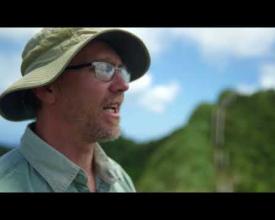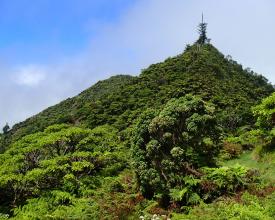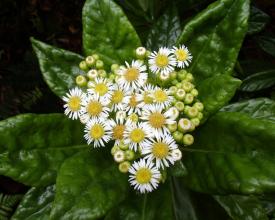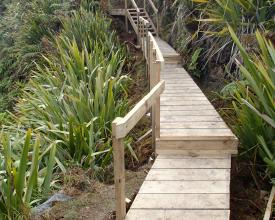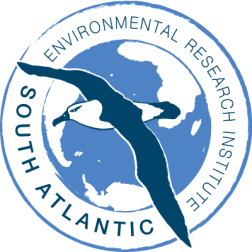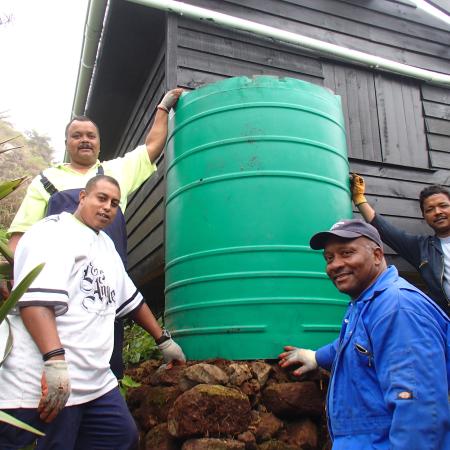
Improving trails and visitor experiences in the Peaks National Park, St Helena Island
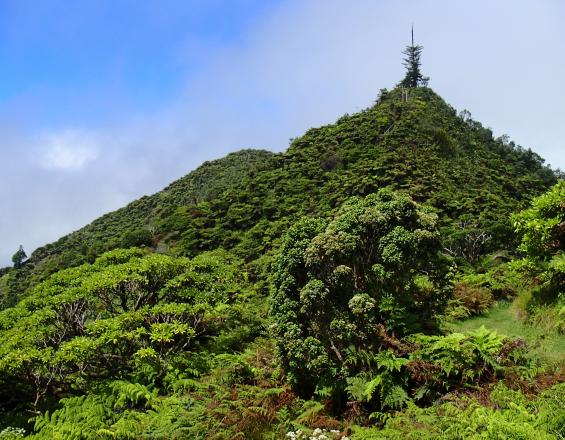
The Peaks National Park is home to the last remaining fragments of endemic cloud forest habitat on St Helena Island. It is a premier hiking destination for locals and tourists, but as tourism numbers increased so did the impacts on the national park. Foot traffic was eroding the trails, the trails were becoming unsafe, and it was beginning to affect the surrounding habitat. Wooden boardwalks, staircases, handrails and a hiking shelter were constructed to improve access, safety and reduce visitor impacts. The trails are now safe and accessible, the profile of conservation in the cloud forest has been improved, and the National Park is now an eco-tourism icon for St Helena.
Context
Challenges addressed
We wanted to encourage more visitors to walk the trails and see the cloud forest in the Peaks National Park. We wanted to create a premier eco-tourism destination. The challenge was how to do that without increasing the impacts from visitors on the environment. Installig raised wooden boardwalks and staircases has allowed access for greater numbers of people.
A small conservation team are based in the Peaks National Park, they are responsible for restoring cloud forest habitat as well as maintaining trails. Their challenge was the more time they spent maintaining trails the less time they had for conservation. The new boardwalks and staircases has reduced the amount of trail maintenance, allowing them to focus on conservation efforts elesewhere.
Location
Process
Summary of the process
Improving walking trails in the Peaks National Park has supported an ecosystem approach and ecotourism as a conservation tool. An ecosystem approach allows better connectivity of cloud forest habitat. The new facilities have created a premier eco-tourism destination.
Building Blocks
Ecosystem Approach to Protected Area Management
Taking an ecosystem approach when managing protected areas is crucial. The cloud forest on St Helena is a threatened habitat that supports numerous endemic species of plants, animals and fungi. Rather than working at a species level, it is important to consider habitats as functioning ecosystems, to manage them holistically, and to integrate the management of land, water and living resources.
Enabling factors
Good knowledge of all aspects of the ecosystem, including land, water and living resources.
Adopting a protected area management plan that integrates all aspects of the ecosystem.
Political will to carry out an ecosystem approach for protected area management.
Lesson learned
Managers of protected areas may be reluctant to adopt an ecosystem approach if they feel that they don't have a good understanding of all aspects of an ecosystem. In these cases it may be more useful to adopt the principle of ecosystem approach with a view to working towards it over time.
Eco-tourism as a Tool for Conservation
Eco-tourism can be an effective tool for generating income for conservation and rasing the profile of conservation programmes in protected areas. Developing eco-tourism attractions such as hiking trails and interpretive programmes in protected areas allows people to access places which would be otherwise inaccessible. It allows people a chance to appreciate the environment and become supporters of conservation. It also provides conservation programmes with a new source of sustainable funding.
Enabling factors
Facilities for eco-tourism ventures, such as trails and interpretive signage or tours.
National or local strategies for eco-tourism promotion and assistance.
Active participation from protected area managers to support eco-tourism in their parks.
Lesson learned
Close working relationships between protected areas managers and local or national tourism authorities is important to ensure eco-tourism activities are appropriate, ethical and safe.
Impacts
Over 250 metres of boardwalks, staircases and handrails were installed, a new hiking shelter was built, and over 4 miles of trails were cleared of overgrown vegetation. The new trails provide better recreation opportunities and have raised the profile of conservation on St Helena.
Visitors can now access the Peaks National Park safely, with a more immersive experience that minimises disturbance to the sensitive environment. Raised boardwalks allow for rare habitat to grow underneath, creating better connectivity of habitat unencumbered by foot traffic.
It has been the largest eco-tourism development on St Helena and early indications are that visitor numbers are up from previous years. The importance of well-managed nature experiences to a small-island economy that is heavily reliant on income from tourism cannot be underestimated.
Beneficiaries
Residents of St Helena, visitors, the managing authority of the Peaks National Park, the St Helena Tourism office, conservationists, and the species that make up the endemic cloud forest habitat have all benefited from this solution.
Sustainable Development Goals
Story

The Peaks Team are a group of local 'Saints' who work day-in day-out protecting the cloud forest in the Peaks National Park. Employed by the St Helena Government, it's their job to restore the habitat and protect it from harm. Experts in local ecology, they collect seeds and seedlings of the rarest endemic plants and raise them in their nursery. When big and healthy, these plants are used to revegetate areas which have been cleared of invasive species. Slowly but surely, they are rebuilding the cloud forest and saving species from extinction.
The cloud forest of the Peaks National Park is the only remaining densely vegetated habitat type on St Helena which can still be considered predominantly native. Only 20 hectares of this remarkable ecosystem remain, confined to the highest ridges generally above 750 metres in altitude. It is dominated by a rich community of tree-fern thicket, habitat for many of the island’s rarest endemic plants, many of which are listed as critically endangered on the IUCN Red List. In recognition of its ecological importance, the peaks were designated as a national park in 1996.
The Peaks Team know first hand how fragile the ecosystem is. It's an environment constantly under threat from invasive species, habitat fragmentation, species loss, climate change and tourism. They are passionate about conservation like to show off their good work to everyone who visits the park. They want people to experience the unique environment of the Peaks National Park in a way that minimises disturbance.
The new boardwalks and staircases have helped do just that. The new facilities ensure the trails are more accessible for people to come visit and see their achievments. It means that they can spend less time fixing the eroded trails and instead focus their energy on conservation.
